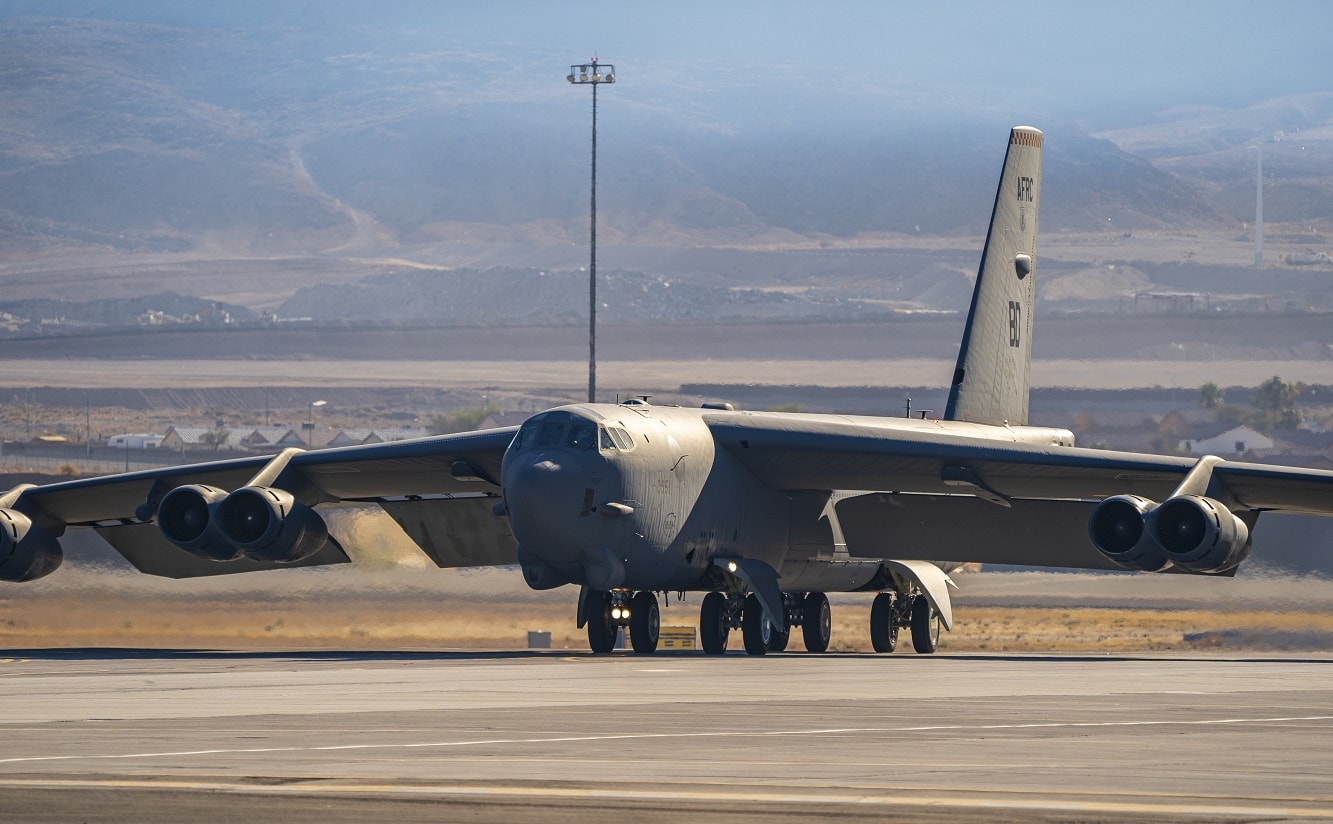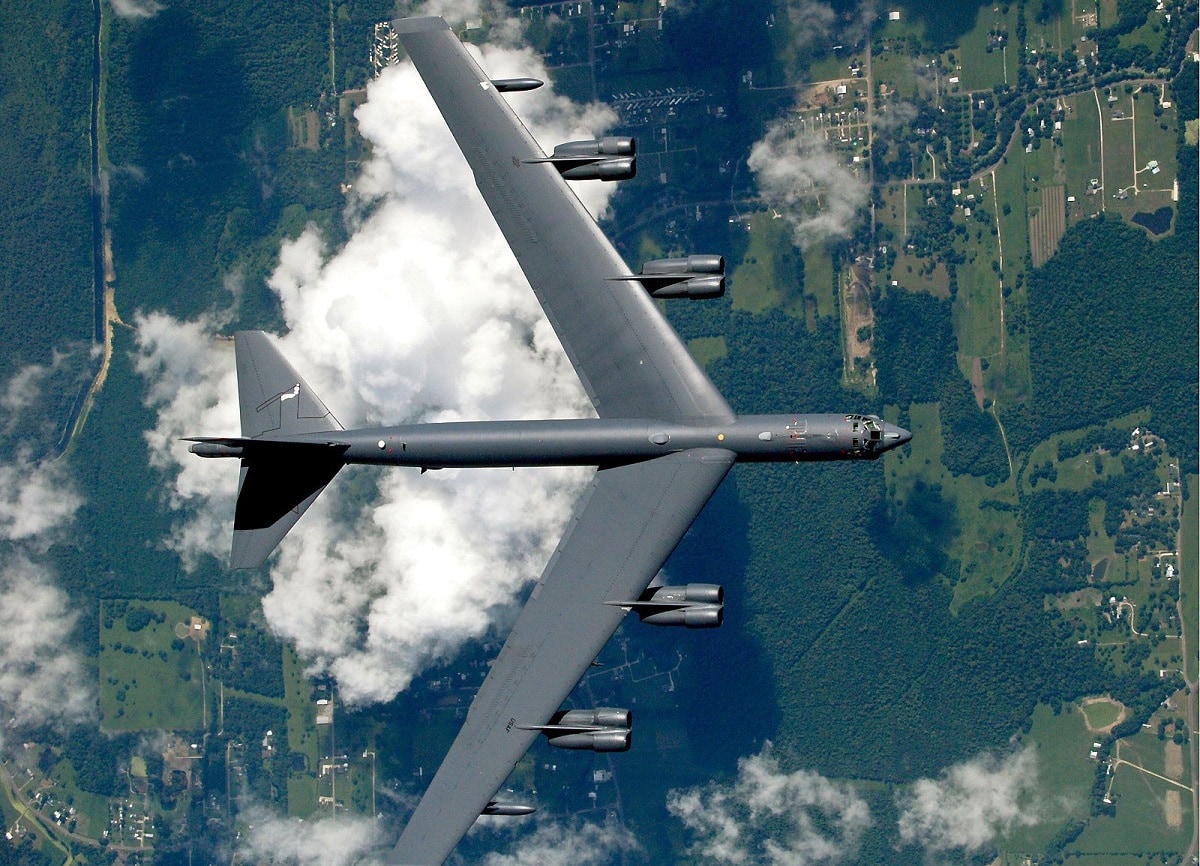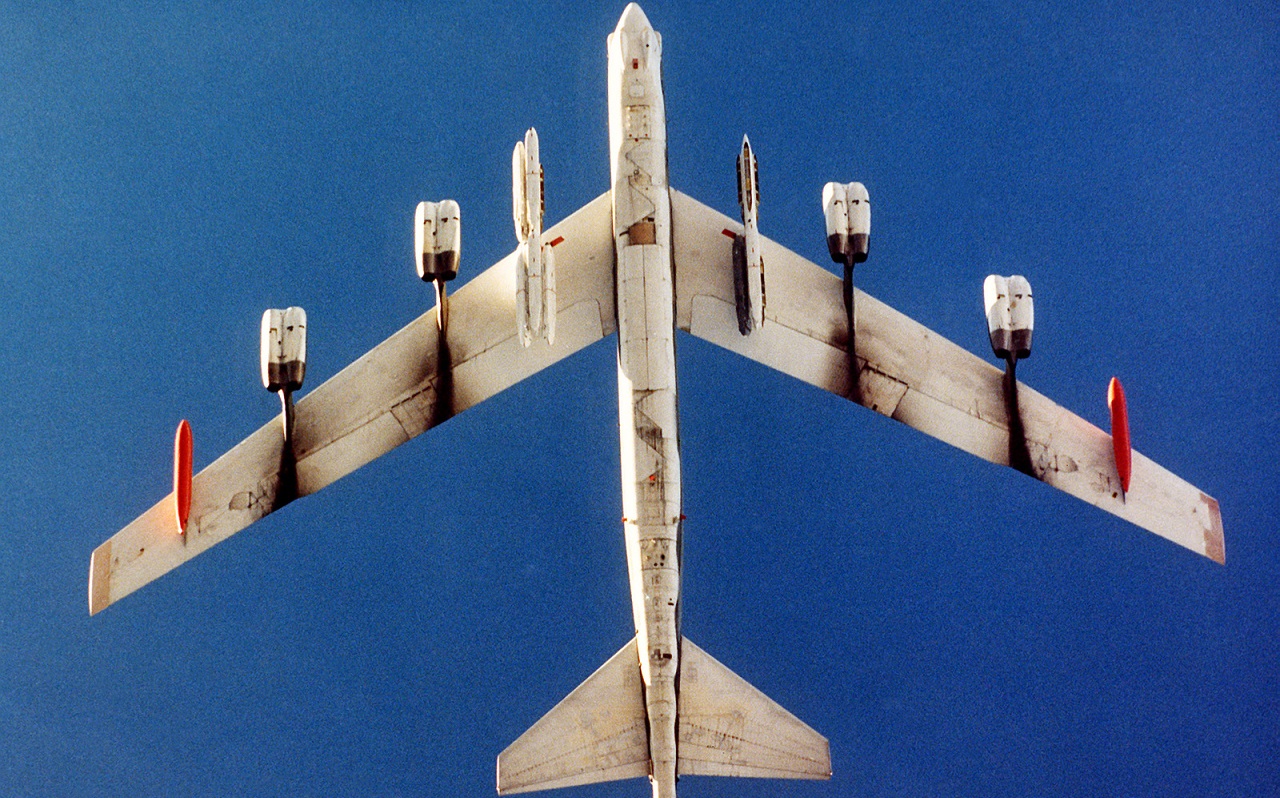Key Points: The B-52 Stratofortress fleet is undergoing critical upgrades to extend its service life through 2050. This includes replacing its 1960s-era engines with Rolls-Royce F-130 powerplants as part of a $2.6 billion program, earning the designation B-52J.
-A new engine cover solution was also tested to prevent ice damage, a recurring issue that has caused $17 million in damages.
-Additional upgrades include Raytheon’s AESA AN/APG-79 radar, cockpit modernization, and crew size reduction.
-These enhancements aim to boost the bomber’s operational efficiency and adapt it to modern combat needs.
B-52 Gets a Cold-Weather Boost with New Engine Covers
Some upgrades are more costly and complicated than others – a fact noted recently as the United States Strategic Command (USSTRATCOM) announced it has begun testing a new engine cover for its fleet of Boeing B-52 Stratofortress bombers.
The U.S. Air Force currently maintains a fleet of 76 of the Cold War-era bombers, which are each powered by eight engines. To keep the bombers flying through 2050 or later, the B-52s are receiving new Rolls-Royce F-130 engines as part of a $2.6 billion upgrade program that was first announced in September 2021. The F130 powerplants will replace the original Pratt & Whitney TF-33 engines that date back to the early 1960s.
The new engines were seen as such a significant upgrade that the Air Force decided the bombers would receive the new designation B-52J.
Got It Covered
Ground testing on the Rolls-Royce engines began this past summer, and last month tests also began on engine covers.
The significance of the covers can’t be overstated, especially for the bombers that operate out of Minot Air Force Base, North Dakota, or are deployed to northern Europe in the winter.
“We found 10 engines were damaged across 2021-2023 due to ice debris, which resulted in $17 million in damages and 160-plus manhours lost,” said Master Sgt. Adam Vasas, AFGSC project champion.
The Air Force Operational Energy Savings Account provided the base with $1.2 million to the base, which worked with STRIKEWERX, the Air Force technology transfer and transition partnership, and the AFGSC Office of the Chief Scientist (AFGSC/ST) to obtain the covers. The previous system didn’t provide a full seal or sufficient insulation, which resulted in the ice buildup.

A B-52 Stratofortress bomber aircraft assigned to the 340th Weapons Squadron at Barksdale Air Force Base, Louisiana, taxis to take off during a U.S. Air Force Weapons School Integration exercise at Nellis AFB, Nevada, Nov. 30, 2021. The U.S. Air Force Weapons School teaches graduate-level instructor courses that provide advanced training in weapons and tactics employment to officers and enlisted specialists of the combat and mobility air forces. (U.S. Air Force photo by William Lewis)
STRIKEWERX aided in the purchase and subsequently facilitated the testing of a dozen Transhield Pod Covers, which are an off-the-shelf solution that has been used to protect commercial aircraft engines, according to Air & Space Forces magazine. It explained, “The Transhield ArmorDillo fabric is covered in polyurethane,” and that can help prevent water intrusion. It is also outfitted with a built-in adaptor, which “lets maintainers attach a ground heater hose to blow heated air into the engine outlets.”
“These rugged, weatherproof covers wrap around the engines to ensure all ducts, inlets, and exhausts are sealed. It can be quickly deployed and removed on the aircraft and provides a method to manually heat engines if necessary,” USSTRATCOM further explained.
The $1.2 million funding will allow the entire fleet at Minot AFB to be equipped with the covers, which STRIKEWERX anticipates will save approximately 7,500 manhours and offer a high return on investment.
“Maintainers will now have the ability to operate more efficiently in arctic weather environments, while people and equipment previously dedicated to keeping the engines warm can be utilized elsewhere or saved in reserve,” Vasas added.

B-52 Bomber Image: Creative Commons.
More Upgrades Coming for the B-52
In addition to the new engines, the remaining B-52s have been receiving Raytheon’s AESA AN/APG-79 radar as part of the addition of new navigation and communication systems, while L3Harris Technologies was awarded a $34 million contract in May 2024 to modernize the cockpit as part of the Air Force’s Global Strike Command B-52 Quad Crew Program, which will consolidate the functions of the electronic warfare officer and navigator into a single position. That would reduce the crew to four, including two pilots and two navigators – moving the electronic warfare operator’s control and display unit panels to the navigator station.
The smaller size crew will also have a bit more privacy – as the bombers have been fitted with a screen for the aircraft’s single lavatory.
Author Experience and Expertise: Peter Suciu
Peter Suciu is a Senior Editor focusing on defense issues for 19FortyFive. He has contributed to more than four dozen magazines, newspapers, and websites with over 3,500 published pieces over a twenty-year career in journalism. He regularly writes about military hardware, firearms history, cybersecurity, politics, and international affairs. Peter is also a Contributing Writer for Forbes and Clearance Jobs. You can follow him on X: @PeterSuciu – and on Bluesky: @petersuciu.bsky.social.

